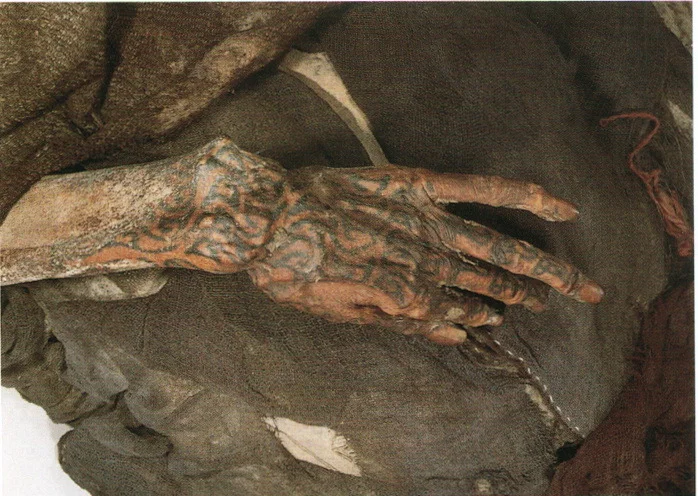History of Tattoo: Tattoo Art from Past to Present
Although it is considered a hobby today, the history of tattooing dates back 7000 years. There is a known fact in World History that; Signs and symbols were the first tools used by human beings in written (non-verbal) communication. These signs and symbols contain many mysteries even today. These signs could reflect a person’s identity as well as their status in society. For example; It could also mean a symbol indicating that one was a soldier, a slave, or the leader of a tribe. Therefore, tattoos have become an art that has been identified with the human body for thousands of years, sometimes giving concrete and sometimes abstract meanings, and emerging by applying a paint under the skin in harmony with the skin.
History of Tattoo: Tattoo Art from Past to Present
Traces of tattoo art can also be found in beliefs such as Shamanism, Paganism and Buddhism in the past. We can give these coincidences as an example of how tattoos may sometimes represent people’s beliefs. However, the findings show that tattoos were not only used as a tool to reflect concrete and abstract meanings, but also, sometimes quite simply, as a tool to express that a man or a woman had reached reproductive age.

Tattoo in Ancient Turks
We can find piggograms (captions) in tattoos. Tattoo; It was documented by Herodotus , the traveling explorer Marco Polo , James Cook , and Professor Kindler Spindler. The first traces of tattooing can be found in Austria, Italy, Greece, Anatolia, Egypt, Algeria, Africa, the Oceania (Marquise, Samoa) islands, New Zealand, America, the poles and It was found in Japan.
Tattoo in Ancient Anatolia
This study focused on the tattoos discovered in Bozhöyük. The body signs and thoughts of the source persons whose photographs were taken were examined. Attention was drawn to the similarity between the body signs and the runic signs here. In addition, the history of the tattoo, the place where it was made, the way it was made, the reason for it and a small dictionary were given. Sources were also added for further research.
History of Tattoo
The tattooed ice man found on the Austrian-Italian border was discovered by Prof in October 1991. Dr. Announced by Kindler Spindler. Clay tattoos in Japan date back to B.C. It dates back to the 5000s. The tattoos on Egyptian mummies made with reed and leaf paints date back to B.C. It belongs to the 2000s.
Tattoo in Ancient Times
While the ancient Troc tribe considered tattoos as a sign of nobility; It was considered immoral by the ancient Greeks. In Rome, it was useful to recognize criminals and slaves. In the 15th-19th centuries, tattooing was very common among the natives of the Americas (Mexico, South and North American Indians, Indians). We understand from the memories of the clergy and many historians who went there between the centuries.
The Oldest Tattoo Traces
Sources mention tattoos made with reed and leaf paints in ancient times, B.C. He states that tattoos were found on Egyptian mummies dating back to the 2000s. On the corpses found in the Hun kurgans, tattoos consisting of imaginary creatures and ram figures made with extremely agile lines and a decorative approach can be seen. It is thought that these tattoos of religious-magical origin are likely to be soot and were formed by injecting it into the skin.
Tattooing in Ancient Europe
Tattoos, which were used to identify criminals and slaves in ancient Rome, are also seen in 19th century England. Tattooing became widespread among Ottoman sailors through Algerian sailors; XVII. It started to be built by the Janissaries in the 19th century to symbolize the “middle” (company) to which they were affiliated, and it continued until the Janissary corps was closed down. In primitive communities, ceremonies are held while tattooing.
The tattoo tradition, which had disappeared in Europe for centuries, suddenly revived in 19th century England; With Captain Cook’s first voyage in 1769, it became widespread among sailors and became exotically colorful. When the Prince of Wales visited the Holy Land (Palestine) in 1862, he had a cross tattooed on his arm.
King Edward VII had a monster motif embroidered on the wrist of his son George during his visit to Japan in 1882. Thus, tattooing was approved by royal decree in England.
Some Middle Eastern tribes painted sea monsters on their bodies in the 12th century to protect themselves from snakes and crocodiles; Tattoos in 19th century Europe had predominantly ’emblem’ value. It was a means for soldiers and people from the same profession to get to know each other.
Signs and Tattooing at Bozhöyük
The fact that painting artists came to Diyarbakır and Mardin and examined tattoos drew our attention to the tattoo tradition, which is among the cultural richness of the region.
Tattoo Tradition in Southeastern Anatolia
I have been in the Southeastern Anatolia region for six years. During this period, the body markings (tattoos) on people’s bodies seemed very interesting to me. As in many parts of the world, tattoos can be seen in the arts of the Huns and later Turkish communities. The animals that are most frequently featured and attract attention are mostly wild ones, such as deer, goats, cats, dogs, wolves, horses, bears and birds of prey.
The tattoo is done at the beginning of the spring season called “Merbaiye“. One or more sewing needles called “needles” tied together with thread are used in tattoo making.
Tattoo, which was banned despite the basic sources of religion, was used as a body mark in Bozhöyük. I even learned from my students who got tattoos that there are women from Mardin who go to touristic areas and do tattoos, and that they do tattoos mostly around Cappadocia. However, they themselves described the shapes of the tattoos they had on their hands. The physical signs of the region are now about to be forgotten.
